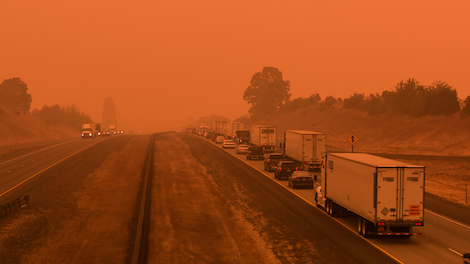Originally posted on Food Manufacturing on 9/21/21.
This year has already seen its fair share of natural disaster damage and disruptions. Here’s how to alleviate some of the stress that they bring to logistics and freight procurement.
From the Dixie Fire in the west to Tropical Storm Henri in the northeast, this year has already seen its fair share of natural disaster damage and disruptions. And while natural disaster management is hugely challenging for many businesses to navigate, it is particularly onerous for food manufacturers and shippers.
The food industry is no stranger to the nuances of shipping sensitive and perishable items. However, when a natural disaster strikes, a new level of uncertainty enters the equation, leaving food manufacturers and shippers scrambling to cope as best as they can to meet customer demand and business goals.
With that in mind, below are some quick tips for food manufacturers and shippers that can help to alleviate some of the stress that comes with trying to drive logistics and freight procurement success amid a natural disaster.
Embrace Technology
One of the most important steps that shippers can take when trying to become more agile and resilient is to trade in their outdated, manual processes for the more sophisticated and innovative tools that exist on the market today. Logistics and freight procurement are among the slowest moving categories in terms of technology adoption today — with many shippers still relying on outdated methods such as Excel spreadsheets to manage their logistics infrastructure. These methods simply do not give shippers the necessary insight into their operations — especially during periods of heavy disruption. With that in mind, food shippers and their logistics teams need to adopt tools such as AI and machine learning that can provide them with the real-time insights they need to make adjustments on-the-fly.
Replace Static Tender
The static tender process has been a staple of logistics and freighting for decades. But as the freight procurement world has sped up, companies that rely on static tender are at risk of falling behind their more agile competitors — especially during times of volatility such as when a natural disaster strikes. When relying on the static tender process it can sometimes take hours to procure an alternate carrier when a load is rejected. Moreover, there is typically very little insight into the process from broker partners about where a load is in the process and which carriers are being tapped. This is obviously incredibly frustrating for food shippers and can ultimately make or break efforts to get goods shipped in a timely manner. Therefore, beyond just embracing a more sophisticated technology infrastructure, food shippers need to leverage the technology at their disposal to find ways to directly access the market and facilitate a shipment in a matter of minutes — or even seconds — not hours or days.
Anticipating Capacity
When a natural disaster hits, it can be very easy for food shippers to be caught flat-footed when it comes to accessing capacity — most notably within the refrigerated market. There is nothing worse than having shipments of in-demand supplies — such as food and water — languishing on the loading dock when they are desperately needed in impacted communities. Therefore, the earlier that shippers can anticipate capacity availability and plan for potential eventually and contingencies the better. Unfortunately, this is virtually impossible to do with manual tools such as Excel spreadsheets. Luckily, though, by tapping into more advanced computing tools and business intelligence strategies, shippers can become far more agile in meeting their capacity needs year-round.
The Final Word
For food logistics professionals, arguably nothing is more daunting than having to cope with a natural disaster. However, by focusing on the few steps above, food manufacturers and shippers can alleviate some of their natural disaster-related headaches and better position themselves for other challenges that may lay on the horizon as well.

